
|
Astronomy Picture Of the Day (APOD)
 The Milky Way's Center
The Milky Way's Center
15.03.1997
Although the Earth is round, our Galaxy appears truly flat. This was shown in dramatic fashion by the COsmic Background Explorer (COBE) satellite which produced this premier view of the central region of our own Milky Way Galaxy in infrared light in1990.
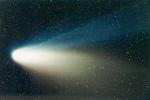 Comet Hale-Bopp's Developing Tail
Comet Hale-Bopp's Developing Tail
14.03.1997
Comet Hale-Bopp is living up to its expectations. Besides the brightness of its coma, a comet is typically remembered by the length of its tails. As visible in the above picture taken last week, Comet Hale-Bopp's blue ion tail shows a dramatic extension, with current reports of about 20 degrees from dark locations.
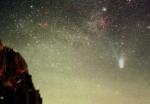 Hale-Bopp Brightest Comet This Decade
Hale-Bopp Brightest Comet This Decade
13.03.1997
The Great Comet of 1997 is now brighter than the Great Comet of 1996 ever was. In fact, it is brighter than almost every star in the sky. Yet Comet Hale-Bopp is still about two weeks away from maximum light.
 Saturn in Color
Saturn in Color
12.03.1997
Saturn is unusual but photogenic. The second largest planet in our Solar System, behind Jupiter, has been easily identifiable at night since history has been recorded. It was only with the invention of the telescope, however, that any evidence of its majestic ring system became apparent.
 Jupiter: The Great Yellow Spot
Jupiter: The Great Yellow Spot
11.03.1997
What happened to Jupiter's Great Red Spot? Operating at a chilly 55 degrees Kelvin, the Galileo Spacecraft's Near Infrared Mapping Spectrometer (NIMS) recorded this composite image of Jupiter's Great Red Spot in late June 1996.
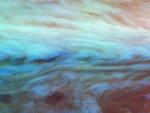 Jupiter: At The Belt-Zone Boundary
Jupiter: At The Belt-Zone Boundary
10.03.1997
Jupiter's thick atmosphere is striped by wind-driven cloud bands that remain fixed in latitude - dark colored bands are known as belts while light colored bands are zones. At Jupiter's belt-zone boundaries the shearing wind velocities can reach nearly 300 miles per hour.
 COBE Hotspots:The Oldest Structures Known
COBE Hotspots:The Oldest Structures Known
9.03.1997
Above are two images of the microwave sky, north and south of our galaxy's equator, based on data from NASA's COsmic Background Explorer (COBE) satellite. After computer processing to remove contributions from nearby objects and the effects of the earth's motion, they show "spots".
 COBE Dipole: Speeding Through the Universe
COBE Dipole: Speeding Through the Universe
8.03.1997
Our Earth is not at rest. The Earth moves around the Sun. The Sun orbits the center of the Milky Way Galaxy. The Milky Way Galaxy orbits in the Local Group. The Local Group falls toward the Virgo Cluster of Galaxies.
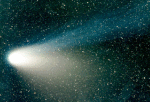 Comet Hale-Bopp Enters the Evening Sky
Comet Hale-Bopp Enters the Evening Sky
7.03.1997
You no longer have to wake-up early to see Comet Hale-Bopp. From many northern locations, you can now go outside just after sunset and see Comet Hale-Bopp above the north-western horizon. Both writer/editors of APOD are impressed by how bright Comet Hale-Bopp has become, and how easily visible it is.
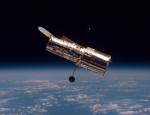 Hubble Floats Free
Hubble Floats Free
6.03.1997
Why put observatories in space? Most telescopes are on the ground. On the ground, you can deploy a heavier telescope and upgrade it more easily. The trouble is that Earth-bound telescopes must look through the Earth's atmosphere.
|
January February March April May June July August September October November December |
|||||||||||||||||||||||||||||||||||||||||||||||||